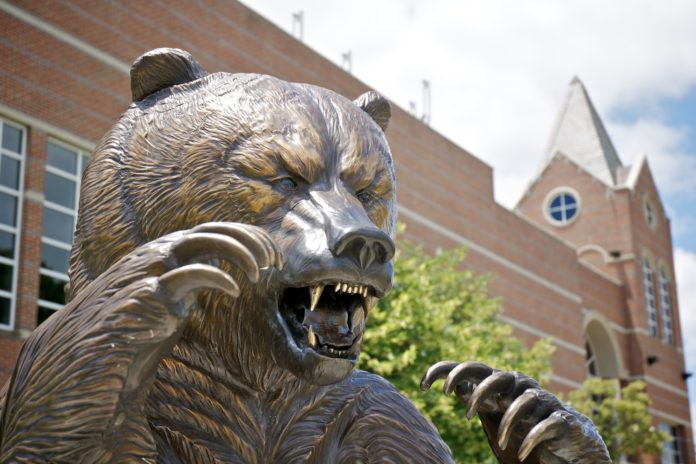Dr. Carolyn Yackel of the Mathematics Department has turned her love of textiles and math into beautiful art. Number theory, combinatorics, group theory, calculus, graph theory, probability, topology, fractals, symmetry groups, polyhedra and tessellations can all be present in art, and Yackel is fascinated by their integration and beauty.
“I have been working in textiles since I was about seven years old, maybe earlier,” Dr. Yackel said. “That is when my grandmother taught me to crochet. I was also introduced to sewing around that time. I gradually became aware of the fact that I was using similar thinking strategies to decipher patterns and to figure out mathematics problems, but I did not formalize that thought until graduate school when I was talking with peers who were also studying mathematics and were serious textile artists.”
Dr. Yackel’s “Crafting by Concepts” book, which she co-edited with Sarah-Marie Belcastro, was published this year. In addition, she has several additional art and writing projects in preparation.
In her own artistic work, some fiber objects she creates are designed to exhibit a specific piece of mathematics. These pieces can be referred to as extrinsically mathematical. The second type of relationship between mathematics and fiber arts can be seen in fiber objects that exhibit mathematical properties as a result of their construction. These pieces can be referred to as intrinsically mathematical.
“Temari balls give an example of intrinsic mathematics as a result of being embroidered with a symmetric pattern,” Yackel said. “This finite symmetry on the sphere must correspond to one of the 14 finite spherical symmetry patterns. I have proven that all 14 such patterns can be represented in temari.”
The discoveries, and her books, have helped her connect with collaborators and friends – both mathematicians and non-mathematicians. They also help her connect with the joy of her profession, discovering the beauty of math and the sharing of that beauty, with friends and the wider public. In fact, she said, her artist friends have helped to encourage her to see herself as an artist, as well as a mathematician.
At a trip to a recent conference on art and mathematics, she saw that joy in the attendees. While it was a serious conference, the level of excitement differed markedly from other such conferences.
“The conference was serious, and rigorous, but it was different because everybody was so excited about what everybody else was doing,” she said. “It’s in their soul, and it absolutely brings people together. Nobody would do this if it wasn’t something they absolutely loved.”










